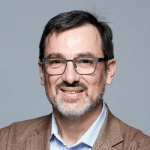Quantum News Briefs January 27: WISeKey takes steps to implement its semiconductors quantum technology; DOE announces $9.1M for research on quantum information science and nuclear physics; Okinawa researchers use AI to discover & apply stabilizing pulses of light or voltage with fluctuating intensity to quantum systems + MORE

Quantum News Briefs January 27: WISeKey takes steps to implement its semiconductors quantum technology; DOE announces $9.1M for research on quantum information science and nuclear physics; Okinawa researchers use AI to discover & apply stabilizing pulses of light or voltage with fluctuating intensity to quantum systems + MORE.
WISeKey takes steps to implement its semiconductors quantum technology
 WISeKey has announced the implementation of project “QUASARS” (QUAntum resistant Secure ARchitecures project) that has officially received the SCS label as a recognition of its quality and innovative aspects. Quantum News Briefs summarizes the announcement.
WISeKey has announced the implementation of project “QUASARS” (QUAntum resistant Secure ARchitecures project) that has officially received the SCS label as a recognition of its quality and innovative aspects. Quantum News Briefs summarizes the announcement.
The QUASARS project, is a radical innovative solution, based upon the new WISeKey Secure RISC V platform that is paving the way for the Post Quantum Cryptography era, offering hybrid solutions compliant with ANSSI’s (“Agence nationale de la sécurité des systèmes d’information,” the National Cybersecurity Agency of France) recommendations. Of note, WISeKey Semiconductors has received strong support from the French SCS (Secured Communicating Solutions) Cluster for its QUASARS project.
Carlos Moreira, CEO of WISeKey noted, “Our QUASARS project is lodged in a newly-formed Semiconductors Quantum technology company, SEALSQ Corp, dedicated to advancing the field of post-quantum computing, making it accessible to a wide range of industries that are already using our semiconductors, and it is enabling advances in communications, computing, healthcare, military systems, transportation, clean energy, and countless other applications.”
The announcement explains it is worth noting that post-quantum cryptography is still in its early stages of development and there is ongoing research to identify and improve the most promising post-quantum techniques.
WISeKey is part of the National Institute of Standards and Technology (NIST) National Cybersecurity Center of Excellence (NCCoE) project, a new secure platform, that will help define best practices for performing trusted network-layer onboarding, and aid in the implementation and use of trusted onboarding solutions for IoT devices at scale. Click here to read Globenewswire announcement in-entirety.
DOE announces $9.1M for research on quantum information science and nuclear physics

The U.S. Department of Energy (DOE) announced today $9.1 million in funding for 13 projects in Quantum Information Science (QIS) with relevance to nuclear physics. Quantum News Briefs summarizes the January 26 announcement.
The selected projects are at the forefront of interdisciplinary research in both fundamental research and use-inspired challenges at the interface of nuclear physics and QIS technologies. Projects include advancing the development of next generation materials and architectures for high coherence superconducting quantum bits, or “qubits,” and a solid-state quantum simulator for applications in nuclear theory. Projects will also develop quantum sensors to enhance sensitivity to new physics beyond the Standard Model and improve precision measurements of nuclear decays. The quantum computing projects explore difficult nuclear physics problems using hardware advantages offered by different near-term quantum platforms. The list of projects and more information can be found here.
“Although we are just beginning to develop the knowledge and technology needed to power a revolutionary paradigm shift to quantum computing, there is a clear line of sight on how to proceed,” said Tim Hallman, DOE Associate Director of Science for Nuclear Physics. “These awards will contribute to advancing nuclear physics research and to pressing future quantum computing developments forward.”
Okinawa researchers use AI to discover & apply stabilizing pulses of light or voltage with fluctuating intensity to quantum systems
 Researchers from Okinawa Institute of Science and Technology (OIST) in Japan have found a way to use artificial intelligence to discover and apply stabilizing pulses of light or voltage with fluctuating intensity to quantum systems. This method was able to successfully cool a micro-mechanical object to its quantum state and control its motion in an optimized way. Quantum News Briefs summarizes SciTechDaily January 26 article.
Researchers from Okinawa Institute of Science and Technology (OIST) in Japan have found a way to use artificial intelligence to discover and apply stabilizing pulses of light or voltage with fluctuating intensity to quantum systems. This method was able to successfully cool a micro-mechanical object to its quantum state and control its motion in an optimized way. Quantum News Briefs summarizes SciTechDaily January 26 article.
Controlling the movement of quantum systems like atoms and electrons poses a much great challenge. These tiny particles are prone to perturbations that can cause them to deviate from their intended path in unexpected ways. Additionally, movement within the system degrades, known as damping, and noise from environmental factors like temperature further disrupts its trajectory.
The machine learning-based method that Dr. Bijita Sarma, the article’s lead author and a Postdoctoral Scholar at OIST Quantum Machines Unit, and her colleagues designed demonstrates how artificial controllers can be used to discover non-intuitive, intelligent pulse sequences that can cool a mechanical object from high to ultracold temperatures faster than other standard methods. These control pulses are self-discovered by the machine learning agent. The work showcases the utility of artificial machine intelligence in the development of quantum technologies.and her colleagues designed demonstrates how artificial controllers can be used to discover non-intuitive, intelligent pulse sequences that can cool a mechanical object from high to ultracold temperatures faster than other standard methods. These control pulses are self-discovered by the machine learning agent. The work showcases the utility of artificial machine intelligence in the development of quantum technologies. Click here to read article in-entirety.
Identifying and differentiating quantum talent for future success
 Booz Allen’s Jordan Kenyon and JD Dulny discuss the increasing need for quantum talent in what is already a small pool in a recent Venture Beat interview summarized here by Quantum News Briefs.
Booz Allen’s Jordan Kenyon and JD Dulny discuss the increasing need for quantum talent in what is already a small pool in a recent Venture Beat interview summarized here by Quantum News Briefs.
Harnessing the transformative potential of quantum technology requires a breadth and depth of talent that is challenging to recruit and retain. To capitalize on QIST’s potential, leaders must accurately manage the expertise their organizations need for strategic planning and R&D, while building hiring pipelines that enable them to scale.
Furthermore, building a team that is capable of operationalizing the technology requires input from experts in the fields of the target application. For example, to create a quantum financial solution to predict a market crash, an organization would need to pair a quantum scientist with an expert in financial data and modeling.
We can learn several lessons from implementing artificial intelligence (AI) teams. Due to the diversity of expertise under the AI umbrella, it’s no longer sufficient to simply recruit an “AI expert.” Rather, recruitment language has evolved to differentiate AI specialties — between computer vision, natural language processing (NLP) and reinforcement learning, for example — to better facilitate connections between people and applications.
As QIST continues to mature, leaders must learn to distinguish quantum expertise with similar specificity. Ultimately, the ideal team will be composed based on the unique mission of the particular agency or organization. The field is still nascent, and until industry standards and norms are further developed, it can be easy to miss important differences among the principal subsets of quantum technology. Quantum sensing, computing and communications require different expertise, and an organization may not need experts in all three areas. Similarly, a single quantum scientist won’t be equally suited to roles across the three technology.
Click here to read or listen to the entire Venture beat discussion/interview.
Sandra K. Helsel, Ph.D. has been researching and reporting on frontier technologies since 1990. She has her Ph.D. from the University of Arizona.



















